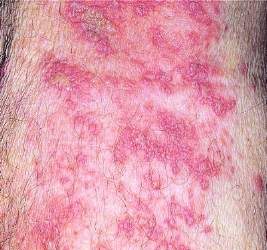Several new biomarkers for atopic dermatitis have been identified that may serve as targets for future drugs, according to a research letter from Angelo Landriscina at Albert Einstein College of Medicine, New York, and his associates.
In a study of 40 biopsy specimens from patients with atopic dermatitis (AD) and 40 matched controls from banked abdominoplasty tissue, interleukin-2 was found to produce pruritus in all study subjects, but this process was accelerated in AD patients. The pruritigens in the arachidonic acid pathways, leukotriene B4 and 5-lipoxygenase, also were increased in AD patients. In addition, the investigators found increased matrix metalloproteinase (MMP)-7, a product of mast cell degradation. In AD, mast cells localize in the epidermis and are stimulated, releasing MMP-7. Finally, alpha-2 macroglobulin was significantly elevated in AD skin.
“Interestingly, all mediators investigated are inhibited by hypochlorous acid, formed when sodium hypochlorite (bleach) mixes with water at pH 5-7,” the investigators noted.
Find the full research letter in Journal of the American Academy of Dermatology ( doi:10.1016/j.jaad.2015.06.036 ).




